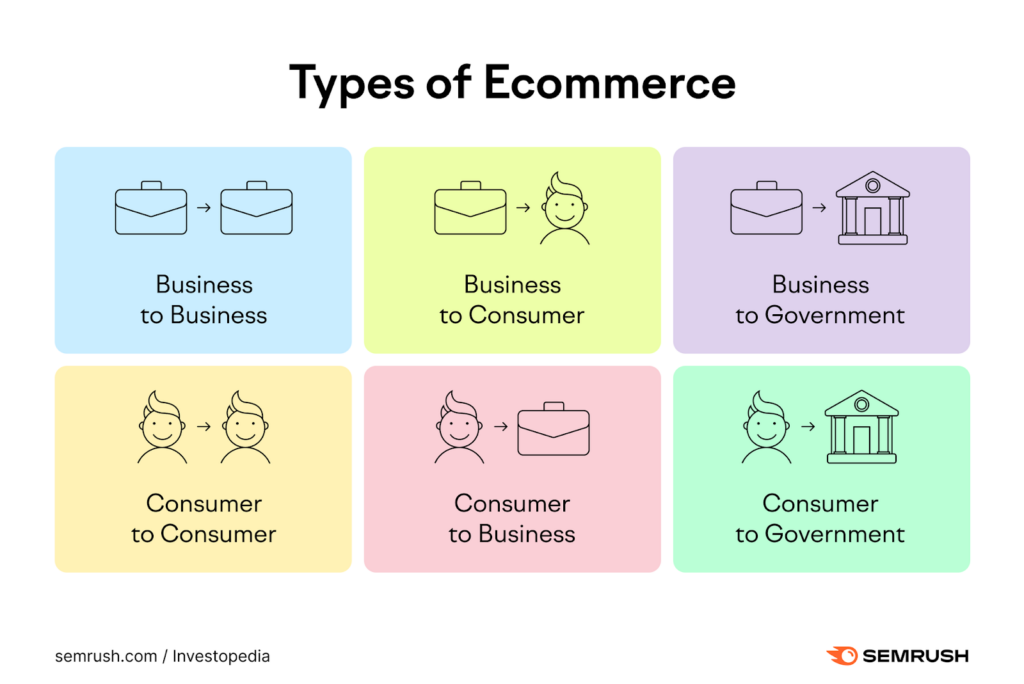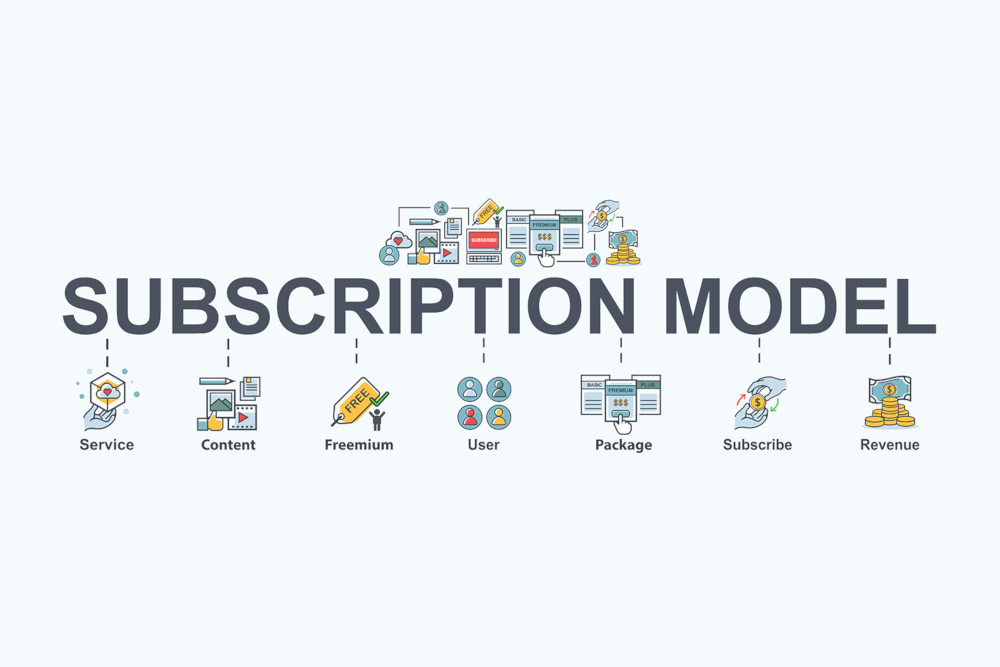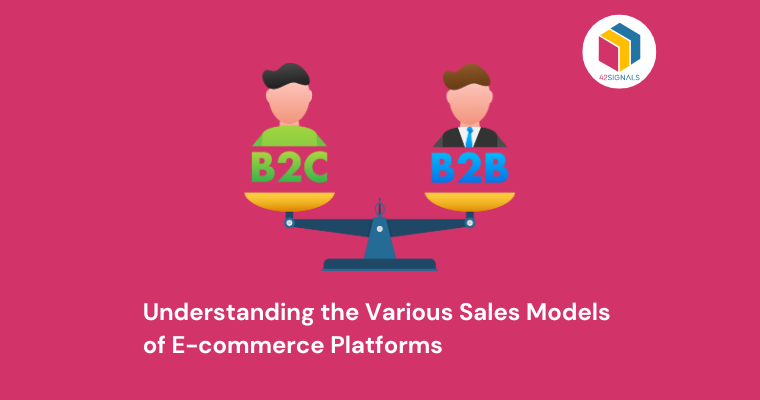E-commerce has completely changed the global economy, allowing access to consumer markets for a wide range of businesses that would never have been able to expand beyond borders and reach new consumers. Choosing the appropriate e-commerce sales model is key. The following part of this article delves deeper into different sales models in e-commerce to help businesses determine which approach will work best for them.
What Are E-commerce Sales Models?

Source: Semrush
E-commerce sales models define the framework through which products or services are sold online. The proliferation of these models affects how sellers, buyers, and intermediaries (marketplaces or service providers) interact with each other. When businesses understand these models, they can align their strategies with market demand and customer preferences in alignment with broader business goals.
Business-to-Consumer (B2C)
The B2C model is the most prevalent in e-commerce, enabling companies to sell their products/services directly to consumers. This model has been widely adopted by online retailers across global marketplaces like Amazon and small niche shops. B2C provides direct interaction with customers, allowing for feedback and brand identity creation.
- Pros: Adjustable pricing that can be modified immediately with market demand.
- Cons: Highly competitive and requires a robust marketing and customer care investment.
This is not surprising given the global B2C e-commerce sales in 2021, which reached about $5.66 trillion, illustrating an impressive opportunity for this model [Statista].
Business-to-Business (B2B)
B2B refers to how businesses sell products or services directly to other businesses, such as manufacturers and wholesalers or any business dealing with bulk orders of goods or services. B2B transactions typically involve larger order volumes and long-term contracts, providing a steady stream of revenue. As a result, the sales process can be complicated and lengthy, with several decision-makers involved. The B2B e-commerce market is anticipated to grow at a CAGR of 18.7% from 2020 to 2027 due to digital transformation (Grand View Research).
Consumer-to-Consumer (C2C)
In this business model, consumers can directly sell products to each other through online platforms (e.g., eBay or Etsy). These websites can offer a range of unique items and have lower operational costs. However, trust and security issues need to be addressed by these platforms to ensure safe transactions and maintain quality control.
Consumer-to-Business (C2B)
In e-commerce, the C2B (consumer-to-business) model occurs when a consumer sells goods or services to businesses. This model has become popular in the context of freelance marketplaces, as it provides individuals with flexibility (freelancers sometimes use this to build new skills by working on different projects) and gives businesses access to diverse talent pools. However, maintaining consistency and negotiating fair prices can be challenging.
Business-to-Government (B2G)
The B2G model involves businesses selling goods or services to the government. This form of economic activity typically involves contracts for public services such as schools, infrastructure, and defense projects. B2G deals are often large, multiyear contracts that require a complex procurement process, which may already be in progress before the deal is finalized.
Direct-to-Consumer (D2C)
D2C (Direct-to-Consumer) refers to a model where manufacturers or brands sell directly to consumers, bypassing traditional suppliers. This model enhances the customer experience by giving brands direct control and increasing profit margins by cutting out middlemen. However, managing logistics and relying on digital marketing can be challenging. Globally, the D2C market grew by 24.3% in 2021, driven primarily by the increase in demand for online shopping and the growth of social commerce (Forrester).
Subscription-Based

Source: Noblue
A subscription-based business model allows for the sale of products or services on an ongoing basis, usually monthly or annually. Examples include subscription boxes like Birchbox or services like Netflix. While this model creates revenue predictability and drives customer retention, managing churn and acquiring new customers remains a concern.
The Role of E-commerce Analytics in Optimizing Sales Models
Choosing the right e-commerce sales model is just the beginning. To thrive in today’s competitive market, businesses must leverage e-commerce analytics and insights to optimize their operations. Tools like Amazon automation and analytics automation help streamline processes such as inventory management and marketing campaigns, enabling data-driven decision-making.
For example, Amazon’s use of predictive analytics data allows the site to better market products and price them according to what people are willing to pay, whereas other sites may undersell themselves or lose profitability through strategic overselling when stock is unavailable. Automating monotonous tasks creates more space for companies to focus on strategic growth, ensuring future success.
Conclusion
Choosing the right e-commerce sales model is crucial for delivering success online. Understanding these various models and integrating e-commerce with growth analytics will enable you to make informed decisions aligned with your business goals. The right sales model, whether you are a startup or an established brand, combined with data-driven insights, can pave the way for sustainable growth going forward.
Sign up to 42signals and make better decisions for your ecommerce business.




